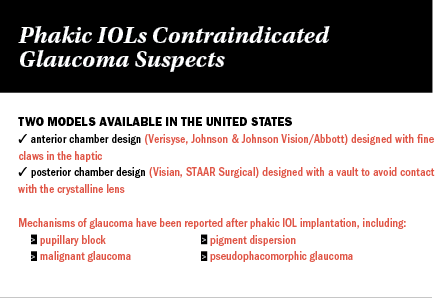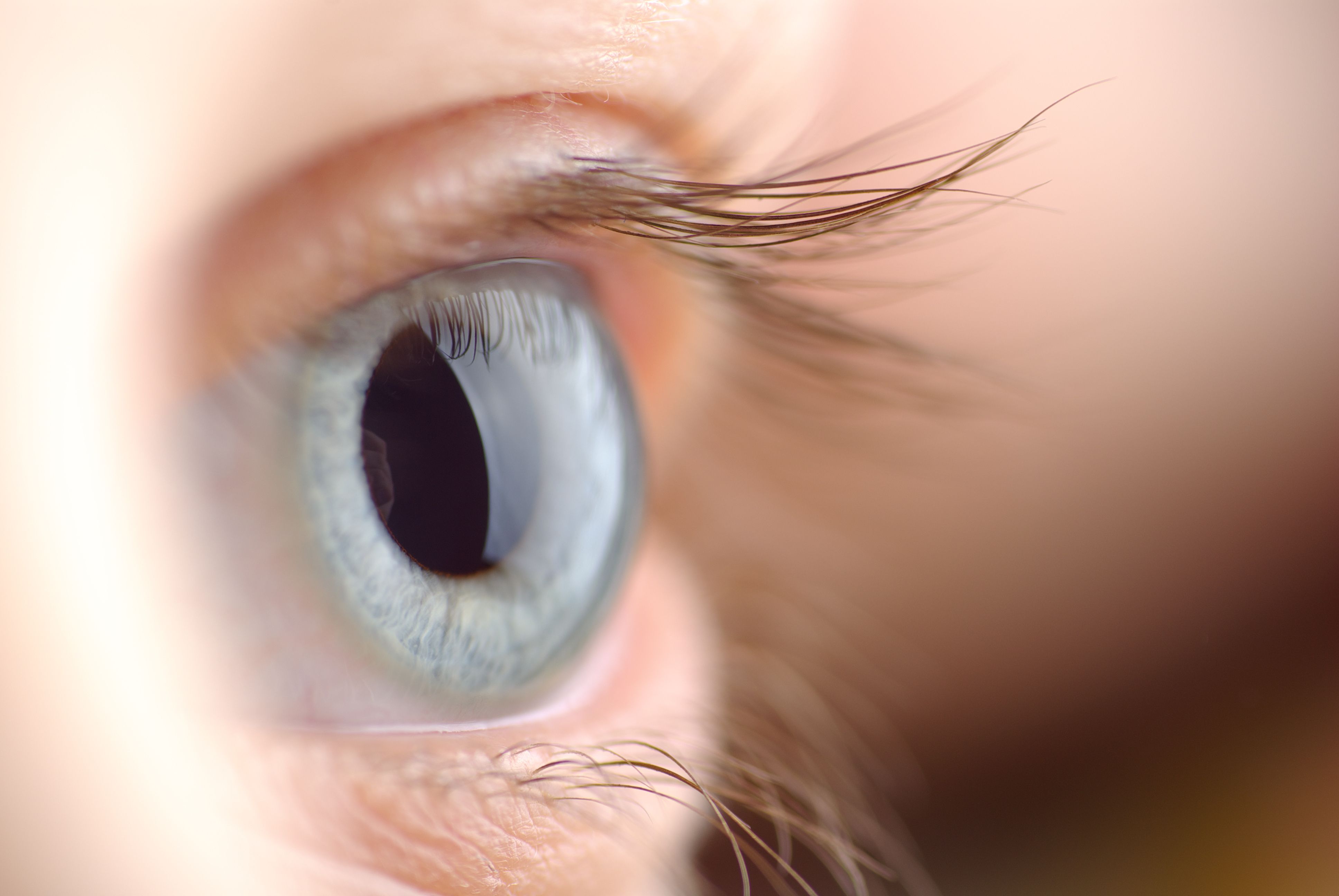Article
Consider risk factors of secondary glaucoma prior to LASIK procedure
Know the patient’s family history of glaucoma, and conduct a comprehensive exam before LASIK procedure. It is crucial to monitor the patient after surgery; watch for interfact cysts, loose flaps, and pressure-induced interlamellar stromal keratitis.
By Conni Bergmann Koury; Reviewed by Sarwat Salim, MD
LASIK patients are young, so it is crucial that surgeons understand the mechanisms of secondary glaucoma-they have many more years in which to develop glaucoma.
Myopia is a known risk factor for developing glaucoma, and most population-based studies have shown an increased prevalence of glaucoma among myopes with a stronger association noted with moderate to high myopia, according to Sarwat Salim, MD.
“Myopia is also a known risk factor for steroid-induced ocular hypertension, and many LASIK patients are placed on steroids for an extended time postoperatively,” said Dr. Salim, professor of ophthalmology and visual sciences, Medical College of Wisconsin, Milwaukee.
Considerations
“These factors make it important that refractive surgeons inquire about patients’ family history of glaucoma as well as perform a complete exam with testing,” Dr. Salim said.
The complete exam should include retinal nerve fiber layer imaging, visual field testing, measure of central corneal thickness, gonioscopy, and disc photos (Figure 1), with the latter two being often overlooked, she noted.
“Gonioscopy is important because there have been reports of acute angle-closure glaucoma after hyperopic LASIK1–2,” Dr. Salim said. Gonioscopy is necessary for identifying some cases of pigment dispersion syndrome.
“Delayed wound healing and less predictable visual outcomes have been reported after LASIK in eyes with pigment dispersion syndrome,” she said.
The syndrome is also a contraindication for the placement of phakic IOLs.3 (See sidebar, “Phakic IOLs Contraindicated Glaucoma Suspects”)

LASIK flap
IOP has been shown to increase as much as 60 to 90 mm Hg during the creation of the corneal flap in LASIK, Dr. Salim said. With the advent of the femtosecond laser, the severity and duration of IOP spikes has decreased, but surgical skills and experience of individual surgeons may vary.
“There are reports of intraoperative optic neuropathy during LASIK with subsequent visual field loss, although it is not clear why this might occur,” she said. “Two possibilities are either ischemia from compromised blood flow or direct trauma to the optic nerve head.4–5”
Steroids
Steroid-induced glaucoma is an important etiology and is generally reported to occur in about one-third of patients who are treated with the agents. It usually occurs within a few weeks after therapy is initiated; however, it can happen at any time and has been seen with any route of drug delivery (mostly topical). Risk depends on medication- and patient-related variables, Dr. Salim said.
“The medication-related variables include dose, chemical structure (acetates penetrate the cornea more readily and are more likely to give a steroid response vs. phosphates), frequency and route of delivery, and the duration of treatment,” she explained. “Patient-related variables to be kept top of mind are a family history of glaucoma, high myopia, connective tissue diseases, and diabetes.”
Both biochemical and structural changes in the trabecular meshwork have been observed in patients with steroid-induced glaucoma.
Specifically, aqueous outflow facility is reduced through various mechanisms, including the accumulation of glycosaminoglycans, increased expression of extracellular matrix components, suppression of phagocytic activity, and ultrastructural changes in the cytoskeleton.
Mechanical factors
Other risk factors for glaucoma to look for in post-LASIK eyes are loose flaps, interface cysts, and pressure-induced interlamellar stromal keratitis (PISK).
“A loose flap after LASIK can result in falsely low measured IOP,” Dr. Salim said. “That, combined with corticosteroid-induced IOP elevation, can lead to undetected high IOP and even blindness.”
Interface cysts have been reported.
“The flap that is overlying the cyst is very thin and easily distensible and force necessary to applanate the flap is negligible, resulting in underestimation of IOP,” Dr. Salim said. “Treatment in these cases involves tapering steroids and IOP-lowering medications.6–8”
PISK after LASIK presents similarly to diffuse lamellar keratitis or DLK with a diffuse interlamellar inflammatory haze covering most of the flap diameter and no interface fluid.9,10
“PISK is usually seen after the first postoperative week, unlike DLK, and it is due to a steroid response,” she said.
Elevated IOP in PISK does not respond to IOP-lowering medications, so recognition is important. The discontinuation of steroids results in the resolution of keratitis and normalization of IOP.
Play it safe
When considering the risk of glaucoma in LASIK patients is to inquire about family history, document it, and educate patients so they know if they need to be followed carefully.
“Next, perform a comprehensive eye exam with diagnostics including gonioscopy, disc photos, tonometry, RNFL testing, and multiple visual fields,” Dr. Salim said.
For patients with suspicious-looking optic nerves, she suggests PRK over LASIK because of the pressure spikes associated with the latter.
“If a potential LASIK patient is a glaucoma suspect and you have insufficient information, it is preferable to delay surgery until testing is complete,” Dr. Salim advised. “Postoperatively, please follow patients closely for interface cyst, PISK, and steroid response.”
References
Paciuc M, Velasco CF, Naranjo R. Acute angle-closure glaucoma after hyperopic laser in situ keratomileusis. J Cataract Refract Surg. 2000;26:620-623.
Osman EA, Alsaleh AA, Al Turki T, Al Obeidan SA. Bilateral acute angle closure glaucoma after hyperopic LASIK correction. Saudi J Ophthalmol. 2009;23:215-217.
Jabbur NS, Tuli S, Barequet IS, O’Brien TP. Outcomes of laser in situ keratomileusis in patients with pigment dispersion syndrome. J Cataract Refract Surg. 2004;30:110-114.
Lee AG, Kohnen T, Ebner R. Optic neuropathy associated with laser in situ keratomileusis. Journal of Cataract and Refractive Surgery. 2000;26:1581-1584.
Bushley DM, Parmley VC, Paglen P. Visual field defect associated with laser in situ keratomileusis. Am J Ophthalmol. 2000;129:668-671.
Fogla R, Rao SK, Padmanabhan P. Interface fluid after laser in situ keratomileusis. J Cat Ref Surg. 2001;27:1526-1528.
Handzel DM, Stanzel BV, Briesen S. [Complication cascade after hyperopic LASIK.] Article in German. Ophthalmologe. 2011;108:665-668.
Hamilton DR, Manche EE, Rich LF, Maloney RK. Steroid-induced glaucoma after laser in situ keratomileusis associated with interface fluid. Ophthalmology. 2002;109:659-665.
Belin MW, Hannush SB, Yau CW, Schultze RL. Elevated intraocular pressure-induced interlamellar stromal keratitis. Ophthalmology. 2002;109:1929-1933.
Davidson RS, Brandt JD, Mannis MJ. Intraocular pressure-induced interlamellar keratitis after LASIK surgery. J Glaucoma. 2003;12:23-26.
Sarwat Salim, MD
p: 414/955-2020
e: ssalim@mcw.edu
This article was adapted from Dr. Salim’s presentation at the 2017 meeting of the American Academy of Ophthalmology. Dr. Salim has no financial relationships to disclose.





